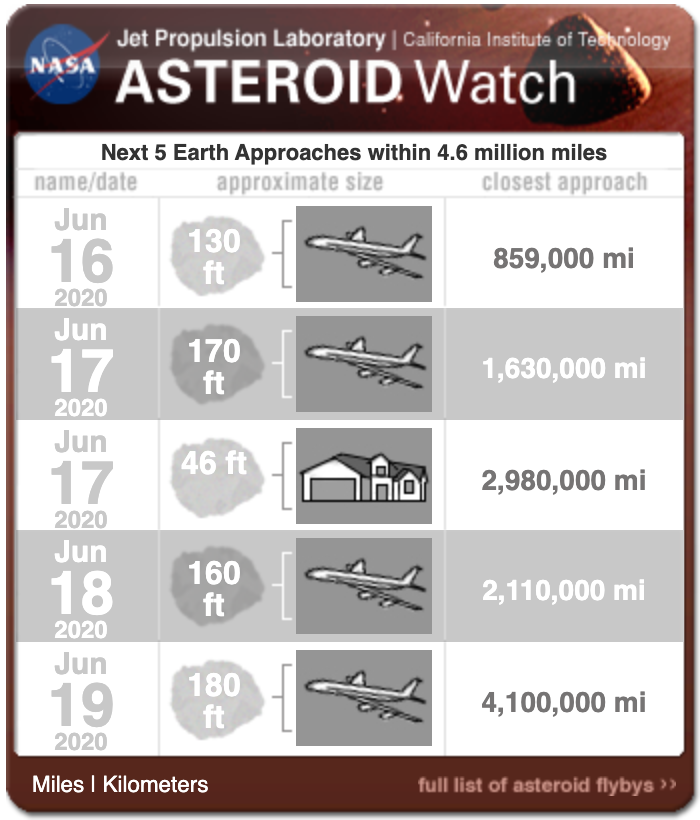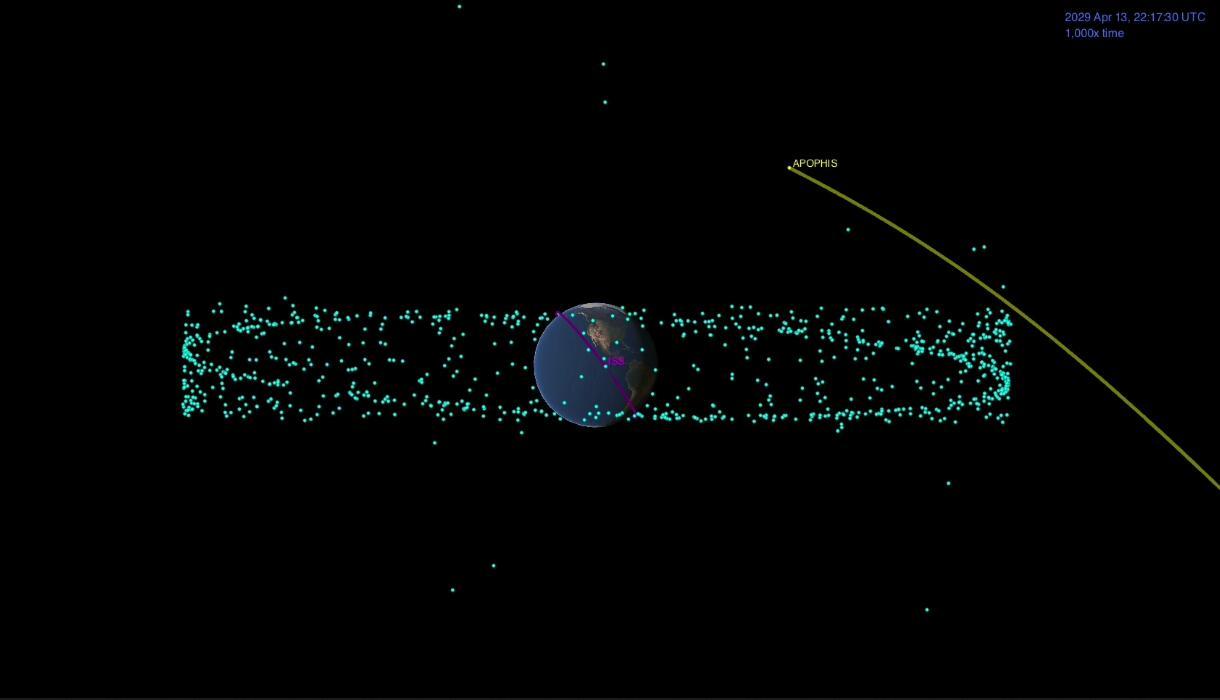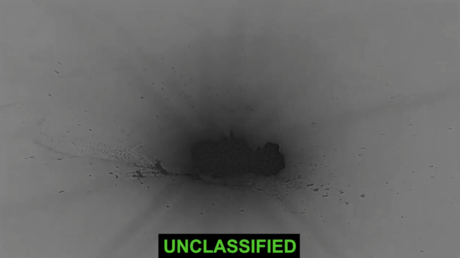
NASA is reporting a rather rocky start to the week, as the Earth is set for at least five asteroid flybys. It comes hot on the heels of another asteroid unexpectedly whizzing between Earth and the Moon without anyone noticing.
Four of the five space rocks due to buzz the Earth this week were only spotted in May, raising concerns about just how prepared our planetary defenses are; While we caught them, we cut it very close if we needed to shoot them out of the sky or at least deflect them, our only two options to stave off an asteroid apocalypse at present.
Thankfully, the asteroids, ranging in size from 46 feet to 180 feet in diameter, will miss us by a safe margin of error of between 869,000 miles and 4.1 million miles, so there is no immediate concern about an impending fiery death raining down from the sky to top off the wildfires, pandemic, economic crises, and social and civil unrest which have plagued the Earth so far in 2020.

However, more worrying than this week’s celestial visitors is a guest who visited our backyard and left before anyone noticed – asteroid 2020 LD, which measures 400 ft/122 meters in diameter.
2020 LD passed between the Earth and the Moon, and was the largest space rock to do so since 2011, and no one knew until it was gone; it passed us on June 5, but wasn’t discovered until June 7.
Having come within 80 percent of the distance between the Earth and the Moon, roughly 190,000 miles or 300,000km, astronomers at the Asteroid Terrestrial-impact Last Alert System (ATLAS) calculated its trajectory after the fact.
So far, ATLAS has discovered 46 threatening “potentially hazardous asteroids” (PHAs) which measure larger than 500ft (140 meters) in diameter. While 2020 LD was not a planet killer, it was still larger than the Chelyabinsk asteroid which wreaked havoc on Siberia in 2013.
According to astrophysicists’ best current estimates, an asteroid with a diameter of 1,640ft (500m) or more is estimated to strike the Earth once every 130,000 years or so. On April 13, 2029, asteroid 99942 Apophis will graze our geostationary satellites in orbit around the planet.

With a diameter of 1,100 ft (340m), Apophis is not quite ‘planet killer’ in size, but it will mark the closest approach by one of the largest known asteroids expected to cross paths with the Earth in the near future.
Next up is Bennu, with a diameter of 1,610 ft (490m), which boasts a slim chance of striking Earth between 2175 and 2199. While still a considerable time away for us here on Earth, the clock is ticking in terms of organizing and assembling our planetary defenses in some tangible way.
The first planned ‘drill’ will take place in 2026, when NASA will attempt to deflect the asteroid Psyche using a so-called ‘kinetic impactor’. That is, of course, if we make it out of 2020 intact.
Think your friends would be interested? Share this story!




